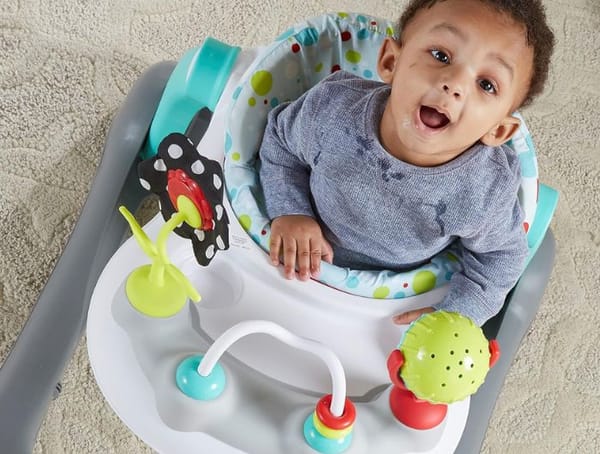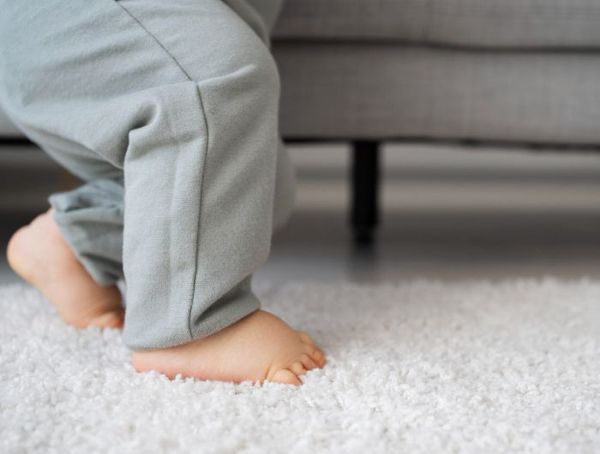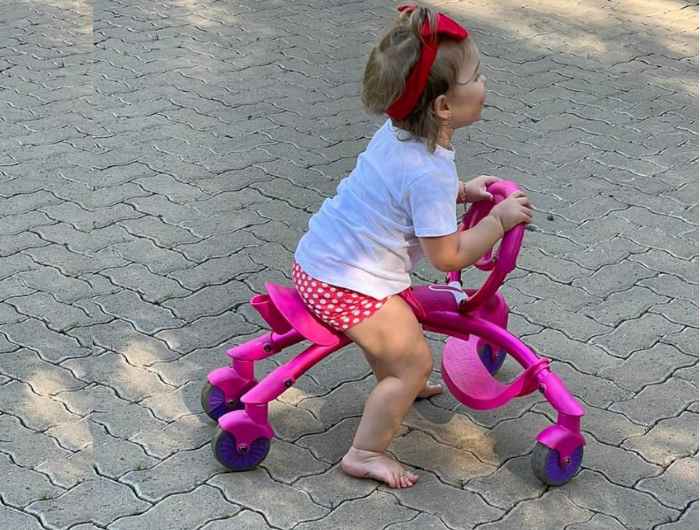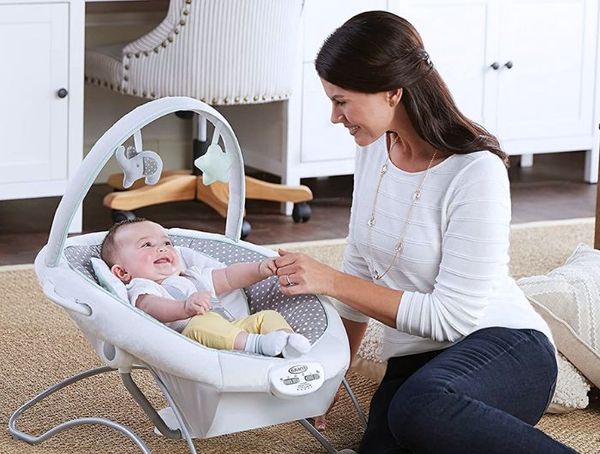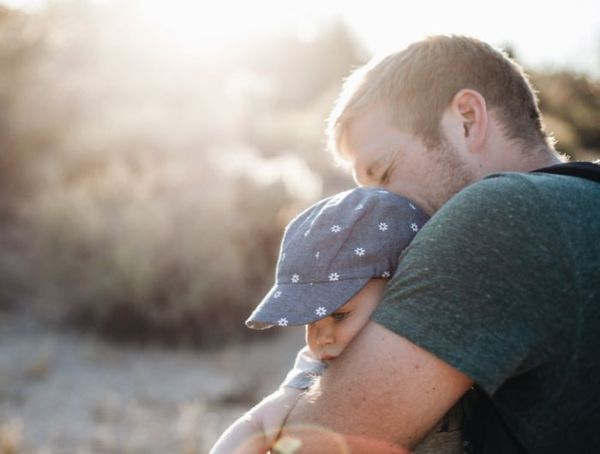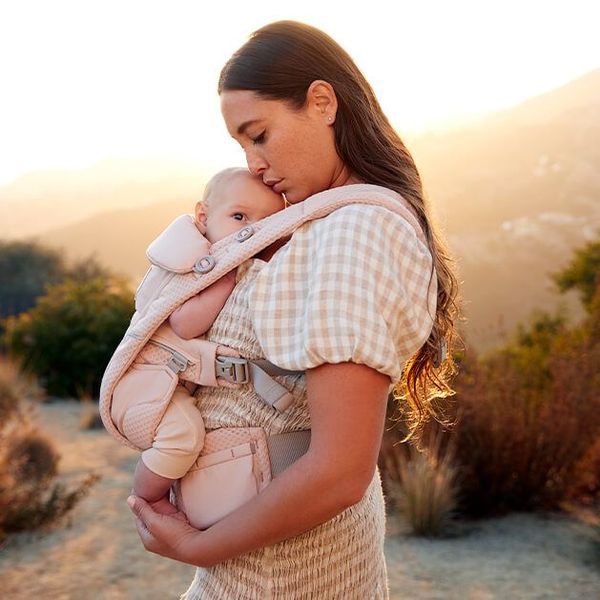As your baby reaches the age where they start to become more mobile, you may be wondering when it is safe for them to use a baby walker. In this blog post, we explore when a baby can use a walker, the benefits, risks, and how to ensure a safe and secure environment while using one.
What Are Baby Walkers?
Baby walkers are devices that allow babies to move around while being supported by an attached seat or harness. They have small wheels or casters that allow the baby to glide across the floor while sitting in the device. Many baby walkers come equipped with toys, music, and lights to keep the baby entertained while they move around.
When Can A Baby Use A Walker?
Experts recommend waiting until the baby is around six months old. At this age, babies can sit without support and have developed enough motor skills to use the walker safely. It is important to note that every baby's development is different, and some babies may not be ready for a walker until several months later.
Benefits of Using a Baby Walker
For parents, a baby walker can provide some relief from constantly carrying their baby around, allowing them to have a free hand to complete tasks around the house. For babies, a walker can help with motor and mental development by providing a new way to explore their surroundings.
Risks of Using a Baby Walker
The most significant risk of using a baby walker is serious injuries, such as falls down stairs or tip-overs. It is essential to note that baby walkers do not teach babies how to walk and may even delay normal walking development.
How to Use a Baby Walker Safely and Effectively
Choose a baby walker that meets the safety standards and has a wide base, anti-slip pads, brakes, and locking wheels. Avoid baby walkers that have toys or attachments that can be easily detached or pose a choking hazard.
Only use a walker in a safe and secure environment. Make sure the area is flat, smooth, and free of stairs, steps, slopes, cords, rugs, furniture, or any other obstacles that could cause your baby to fall or get stuck. Also, keep away any potential dangers such as sharp objects, hot liquids, electrical outlets, or fireplaces.
Supervise your baby at all times when they are using a baby walker. Do not leave them alone or out of your sight even for a moment. Be ready to intervene if they encounter any trouble or get too close to any hazards.
Limit the time your baby spends in a baby walker. Do not let them use it for more than 15 to 20 minutes at a time or more than once or twice a day. Too much time in a baby walker can interfere with your baby's normal walking development and cause them to rely on it too much.
Balance the use of a baby walker with other activities that promote your baby's motor development. Encourage your baby to crawl, stand, cruise, and walk without any support. Provide them with toys and games that challenge their balance, coordination, and strength.
Alternatives to Baby Walkers
If you are not sure about using a baby walker or want to try something different, there are some alternatives that can also help your baby learn to walk. Some of these include:
Walk behind toys
These are toys that your baby can push or pull while walking behind them. They can help your baby practice their balance and coordination while having fun. Some examples are push carts, wagons, or dolls strollers.
Stationary activity centers
These are devices that have a seat that rotates or bounces and a tray that has various toys attached to it. They can provide your baby with entertainment and stimulation while keeping them in one place. They can also help your baby develop their leg muscles and fine motor skills.
Baby harnesses
These are devices that have straps that go around your baby's chest and waist and attach to handles that you hold. They can help you support your baby's weight while they walk beside you. They can also give your baby confidence and security while they learn to walk.
Another alternative is to let babies develop their motor skills naturally by allowing them to move and explore their environment without any devices.
Importance of Developing Large Motor Skills
One of the most important aspects of your baby's development are large motor skills. These are the skills that involve moving the big muscles of the body, like the arms, legs, and trunk. They are essential for your baby to learn how to sit, crawl, walk, climb, and more.
You see, physical skills take practice, practice, practice—which your baby can’t get while cooped up in a stroller or a bouncer. So let your little one loose, and provide lots of activities that allow him or her to develop the large motor strength and coordination eventually needed for walking and beyond.
Change up your baby’s position often—from back to tummy, from propped-up to prone, from the crib to the floor—so he or she will have the chance to practice all kinds of physical feats. This will also help prevent flat spots on the head and tight muscles in the neck.
Conclusion
By waiting until babies sit without support before introducing them to a walker, parents can ensure that their little ones can use the device without risking harm or injury. When used appropriately, baby walkers can also help babies learn and develop new motor skills in a safe and supportive environment.
However, it is essential to remember that every baby is unique, and parents must gauge their baby's readiness based on baby's age and developmental stage. Ultimately, ensuring that baby walkers are safe and appropriate for your baby's life stage will enhance your baby's learning experience and help them progress towards their next milestone with confidence.
Thank you for reading Mother Bear Reviews, your favorite parenting blog!



